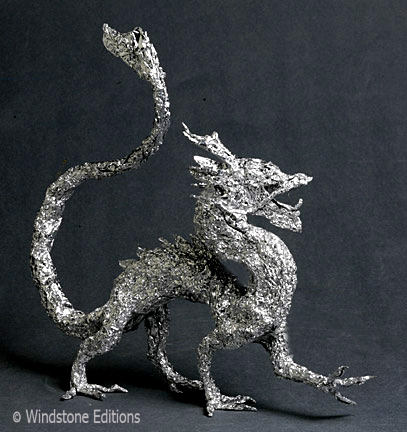7 Ways to Incorporate Art into Your Social Studies Instruction
Arts integration is crucial in the classroom. Research has proven over and over that arts integration increases learning and decreases behavior problems. According to Joyce H. Burstein and Greg Knotts,
The visual and performing arts help children reach content understanding while being immersed in the creation of an art form. Ultimately, children learn about other cultures and develop a deeper understanding of their own.
Here are seven ways you can incorporate the arts into your everyday lessons.
1. Make your own maps.
It is absolutely necessary to use maps in your social studies classroom. My students love it. One of our favorite activities together is always creating a map showing Westward Expansion in the US. There are tons of ways to do this, and I don’t think there’s a single wrong way, but I’d like to share a certain resource with you.
No matter what area you’re focusing on, Owl & Mouse has a map for it. There are interactive games and geography puzzles. There’s also a section where you can create printable maps in any size you want. The largest option takes 64 sheets of paper and creates a mega map that you piece together. Imagine how much more detailed you can get, and how much more students will love interacting with maps that they create themselves!

Image from Owl & Mouse
2. Build with Lego.
Teaching using Lego isn’t necessarily a new idea. It’s been used in classrooms for years, and recently the corporation even developed a program specifically for teaching math using Lego. But when it comes to using it in social studies, we’re sometimes stumped. There are lots of sets you could purchase, but most schools are on tight budgets these days. Instead, why not have students create a replica of a Renaissance building or a Mayan pyramid? The internet is full of ways to use Lego in the classroom, and it’s pretty much guaranteed: your kids will love it.

Image from Walking by the Way
3. Design time period clothing.
While reading Anna Karenina, it occurred to me that I really didn’t know what people in Russia wore during the nineteenth century. I couldn’t fully appreciate what I was reading until I could visualize it, so I had to go look it up. This is true of the kids in your class, too; it’s impossible to immerse yourself in the study of history without a knowledge of what everyday culture was like.
The Life Nostalgic offers printable World War II paper dolls (and honestly, a quick Google search brings up a lot more). My students loved these! If you teacher older kids, Claire Hummel, a production designer for HBO, has provided tons of resources on historical fashion. You can even find actual patterns – if your school is fortunate enough to have a sewing class, like mine did, this is a perfect way for you to collaborate with that teacher. Or, if you’re feeling creative, you can have a historical dress-up day!

Image from Daisy Janie
4. Create aluminum foil art.
A few years ago, if anyone had suggested that I create art in my classroom using aluminum foil, I’d have been very skeptical. Since then, however, I’ve met many teachers more creative than me, and several of them use this method in their art classes.
Because aluminum foil is so pliable, the first use that comes to mind is a low-relief sculpture. Most districts require that students learn the indigenous trees and plants of their state; what better way to do it than to create a relief “sculpture” made from the leaves? Mrs. Knight shows how to create small aluminum foil figures. I love the idea of using these figures to recreate a famous moment in history. Imagine a miniature-sized foil recreation of the Big Three meeting at Yalta!
If you’re feeling ambitious, have your students create some of the animals that come from various regions of your state or country. This will take some time, but these hands-on, concrete activities help students create meaning out of otherwise abstract ideas.

Image from Reptangle at Deviant Art
5. Use found objects to create mixed media art.
Don’t have much money in the school budget for materials? Found art is perfect for you. Most of us are familiar with the Readymades of Marcel Duchamp. The idea was that artwork should engage the mind and make the viewer think, rather than simply being visually appealing.
We can implement this same idea into our classrooms easily. Perhaps students create an art journal entry based on a certain historic figure. Students can even help create mixed media bulletin boards (this one features paint, photographs, and drawings).

Image from The ArtRoom
Allow your students to created mixed media collages using paint and newspapers or magazines. Tie it to social studies by giving asking them to depict a historically relevant location, or design a family crest for the king or queen that you are currently studying.
6. Create trading cards and recreate social media
Remember back when you were a kid and you spent hours pouring over your baseball card collection (or in my case, your Garbage Pail Kids collection)? Let your students have some of the same fun. ReadWriteThink offers a trading card creator which allows for numerous variations of a simple trading card (fictional characters, real people, places, concepts, and more), and is excellent for checking student knowledge. A quick Google search leads to several teachers who have created their own templates. My students always enjoyed creating trading cards for themselves first – it’s automatically interesting to them, and they get practice writing in trading card format.
Some teachers have taken the trading card even further. Now, we have historical Facebook pages. Students love social media, and creating a Facebook, Twitter, or Instagram page for a historical figure will seem like more fun than work. Even for a grown-up, Romeo and Juliet on Facebook? Super fun.

Image from The Buttry Diary
7. Create a tableau vivant.
I’ve saved my favorite for last. I love tableaux vivants, and used them in my classroom often. A tableau vivant is literally a “living picture.” It’s an art form which incorporates live drama with visual art. This art form has a long and interesting history, but incorporating it into your classroom is simple. During your social studies instruction, display a favorite or well known artwork or photo from the time period you’re studying. (One that would work particularly well is Washington Crossing the Delaware, as seen below.) Students then recreate the image, “acting out” what is happening.

Image from Making of Modern America
When you intentionally incorporate photographs and artworks from history, your students begin to construct knowledge based on the conclusions they’ve drawn. For example, if creating a tableau vivant of Dorothea Lange’s Woman with Children in a Tent, students analyzing the photo might lead others to conclude that, given the time period and knowledge of the Great Depression, the student “actors” should try to appear hungry. It is a fantastic way for students to gain a deeper understanding of the human element of history.

Leave a Reply